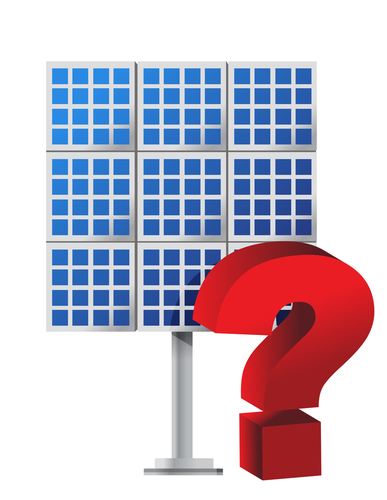Solar Electricity Plans QLD : Which should I choose?
This guide aims to help you navigate the solar electricity market. We’ll explore the benefits of solar power, the financial aspects, and the available incentives.
We’ll also delve into solar buyback electricity plans and how they work.
By the end of this article, you’ll be equipped to make an informed decision about the best solar electricity plan for your needs.
Understanding Solar Electricity in Queensland
Solar electricity is generated by converting sunlight into power. This is done using solar panels, which are often installed on rooftops.

How feed-in tariffs work
The energy generated by your solar power system is transformed into electricity for use in your home. Surplus electricity can be fed back into the grid, and you might receive a payment for this excess, known as a feed-in tariff.
Residents of South East Queensland can obtain a market feed-in tariff directly from their electricity retailer. With no set rate for electricity fed into the grid, retailers provide competitive market-based tariffs, so it’s advisable to compare offers for the best deal.
Those in regional Queensland have access to a regional feed-in tariff.
New customers are not eligible for the former Solar Bonus Scheme feed-in tariff. For more information, visit the Queensland Government’s feed-in tariffs page under Homes and Housing at www.qld.gov.au.
In Queensland, solar power is a favored option due to the ample sunshine, playing a significant role in the state’s renewable energy portfolio. Opting for a solar electricity plan in QLD contributes to a greener, more sustainable future, marking progress in reducing fossil fuel dependence and addressing climate change. Annually, thousands of Australian homes make the switch to solar. Given the substantial cost of solar panels, it’s crucial to ensure that your solar energy plan is tailored to your requirements to maximize your investment. For novices, particularly those installing solar for the first time, understanding feed-in tariffs (FiTs) and monitoring exports can be complex without a benchmark for what constitutes a ‘good deal.’ Our aim is to clarify the essentials and present several competitively priced energy plans with solar benefits. In evaluating solar electricity plans in QLD, a variety of choices exists, each with distinct features and advantages. Some plans offer reduced rates, while others boast higher feed-in tariffs,
Solar buyback electricity plans, also known as feed-in tariffs, are integral to solar electricity strategies. They permit the sale of surplus solar energy back to the power grid. The selling rate is subject to variation based on your energy provider and the chosen plan. While these plans can yield extra savings on energy bills, comprehending your plan’s specifics is vital. Ultimately, solar buyback plans can significantly enhance the financial benefits of your solar installation.
What should I look for in a solar energy plan?

Solar energy plans are not one-size-fits-all. It’s best to select a solar electricity plan that aligns with your system and usage needs. Here are some general suggestions for the type of energy deal that may suit your system and household needs, based on your solar panel output and daily energy use.
If your solar panels only partially cover your daytime power usage: You might want a solar energy plan with low electricity usage rates. This is because you’ll still depend heavily on the grid to meet your energy needs. In this scenario, a high feed-in tariff (FiT) would be unnecessary, as you’re not exporting much surplus solar energy to the grid, if any.
If your solar panels can power your entire day: You should look for a solar energy plan with favorable electricity usage and supply rates. This is because you’ll need grid electricity in the evenings when your solar panels aren’t active. A plan with a high FiT might not be beneficial, as you’re likely not exporting enough surplus to make a significant return. Additionally, it might mask higher usage and supply rates.
If your solar panels produce more energy than you use in a day: You might prefer a solar energy plan with a higher FiT. This is because your system will begin exporting the unused solar energy back to the grid. A solar battery could also be useful to store excess energy for later use. If opting for a higher FiT plan, ensure that the rates are competitive for times when you need grid electricity.
- If you have solar panels with battery storage: You might look for a solar energy plan with a reasonable FiT and competitive energy rates. Your energy plan should be cost-effective for when your storage system is depleted or exceeds its capacity. Households that are self-sustaining and rarely use grid electricity should consider their energy plan carefully to ensure it meets their specific needs.
- Feed-in tariffs | Homes and housing | Queensland Government (www.qld.gov.au)
In South East Queensland, electricity retailers voluntarily provide competitive feed-in tariff rates for solar power customers. Since these rates vary among retailers, it’s crucial to compare and find the most favorable rate.
The Queensland Competition Authority oversees the feed-in tariff offers in SEQ, offering guidance based on anticipated usage as part of its price monitoring responsibilities.
To discover the feed-in tariffs available, one should visit the Australian Energy Regulator’s Energy Made Easy website. Utilizing the energy offer comparison tool will reveal the rates provided by various electricity retailers.
A useful tip: Your current feed-in tariff rate can be found on your electricity bill. It’s advisable to consider feed-in tariffs alongside your total electricity consumption.
Choosing the Right Plan for Your Energy Needs
Choosing the right solar electricity plan depends on your energy usage. It’s important to understand your consumption patterns.
Consider your daily energy usage. Also, think about when you use the most electricity.
Some plans offer better rates for usage during peak solar production times. Others may offer better rates for off-peak usage.
Here are some factors to consider:
- Your daily energy usage
- The time of day you use the most electricity
- The feed-in tariff rate
- The contract terms and conditions
In conclusion, understanding your energy needs is crucial. It will help you choose the best solar electricity plan for your situation.



